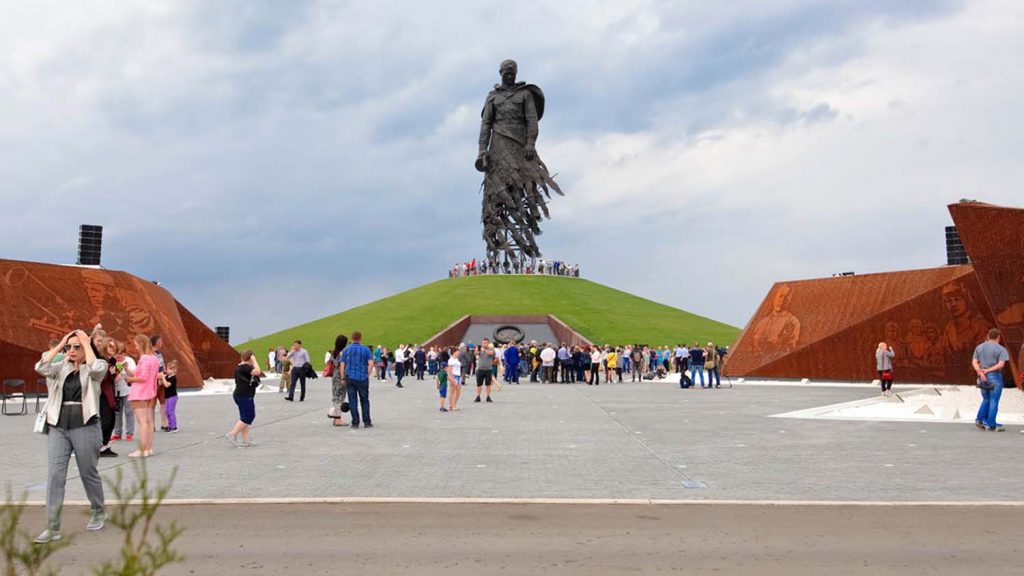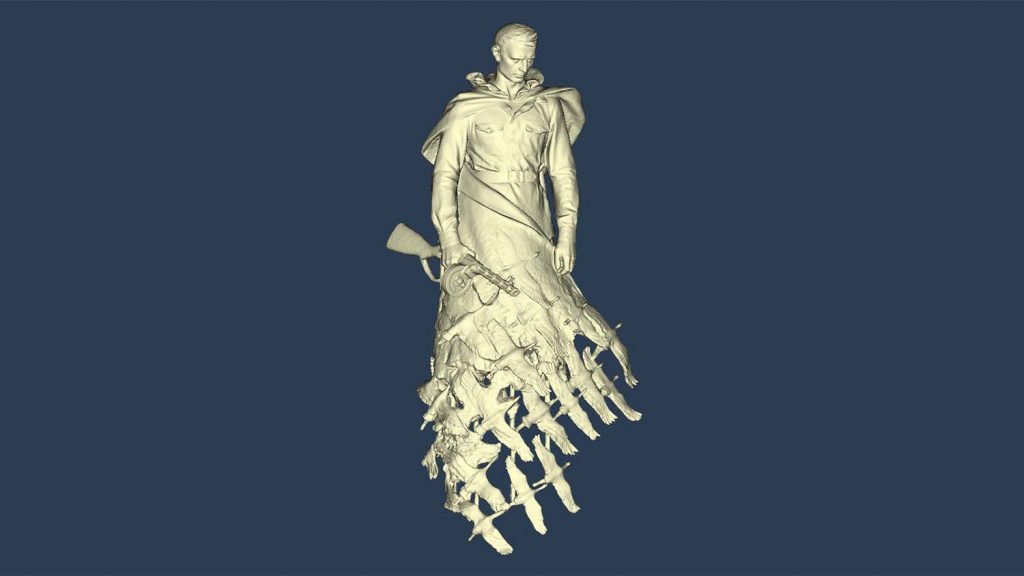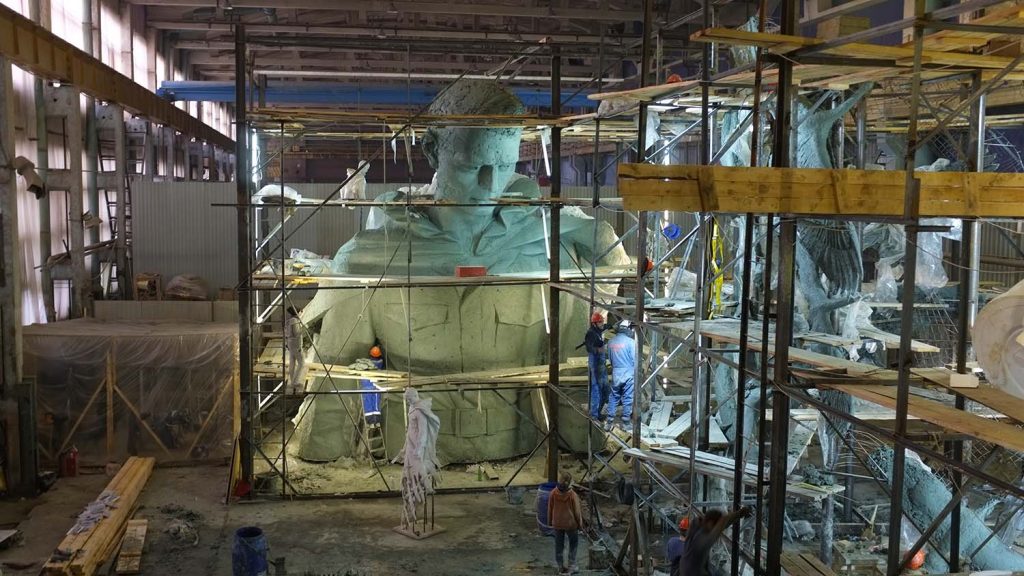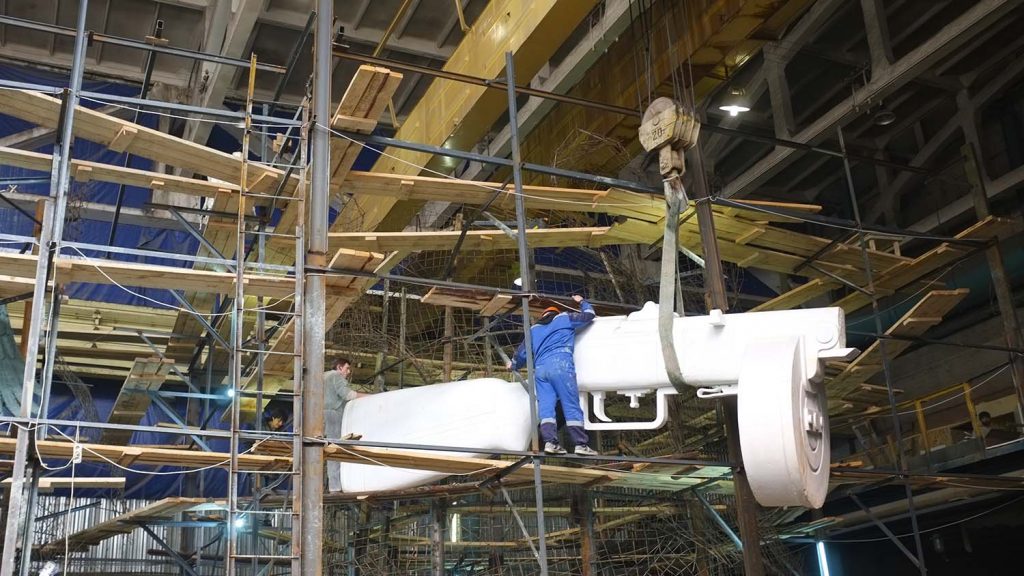The Rzhev Memorial to the Soviet Soldier is a colossal sculpture inspired by the veterans of World War II, of which 8.6 million of its military personnel died in the conflict.
Forming the central focus of the Rzhev Memorial Park, which commemorates the 2.3 million Soviet war dead at the Battles of Rzhev, the central bronze figure weighs 80-tons and stands 25 meters tall.
Creating the artwork was painstaking and laborious work for the sculptors and engineers involved in the construction, although 3D technology did help to simplify the preparatory stages and helped to avoid errors during the assembly of the giant components.
The project began in 2017 when the first sketches of the sculpture were drafted by sculptor Andrey Korobtsov and architect Konstantin Fomin. The selection of the centrepiece took six months to be passed by officials, before the sculpture underwent multiple edits by historians and engineers over the course of three years.
Prior to beginning construction, a stable foundation had to be made. This was particularly challenging, given the park’s soil is swampy with frequent strong winds, and experts were concerned that the frame of the monument might not withstand such unfavourable conditions.
To tackle this challenge and test the initial prototype, a two-metre tall version of the sculpture was digitised to undergo simulation.
Using a Thor3D scanner, the sculpture was captured by scanning in a spiral motion from the top of the head to the floor.
Since even the original sculpture was large, the scan was split into two parts, first the head and torso, and then the supporting structure itself. After the scanning was finished, the 3D Scanning specialists at Thor3D combined two parts of the scan in its software and created the finished model.
The 3D model was further modified in ZBrush and scale version was 3D printed to be tested in the wind tunnel.
Following the tests, the supporting structure was strengthened and finalised.
When the prototype of the sculpture was finally approved, Andrei and Konstantin set about creating a full-size sculpture in a rented workshop. The 25-meter sculpture was divided into three parts, with each molded separately.
Once the three elements had been moulded, they were further divided into a total of 600 fragments to be cast in bronze.
The assembly of the core elements of the memorial was completed on 31 March 2020.










